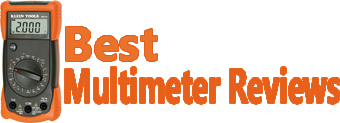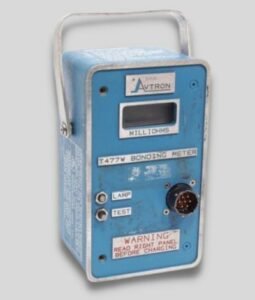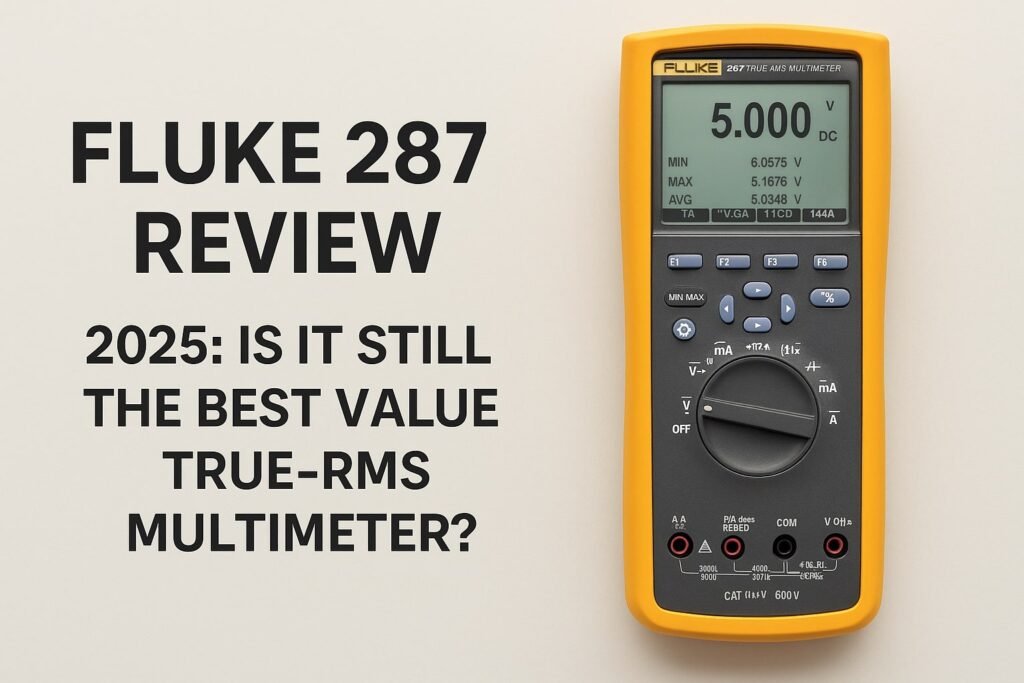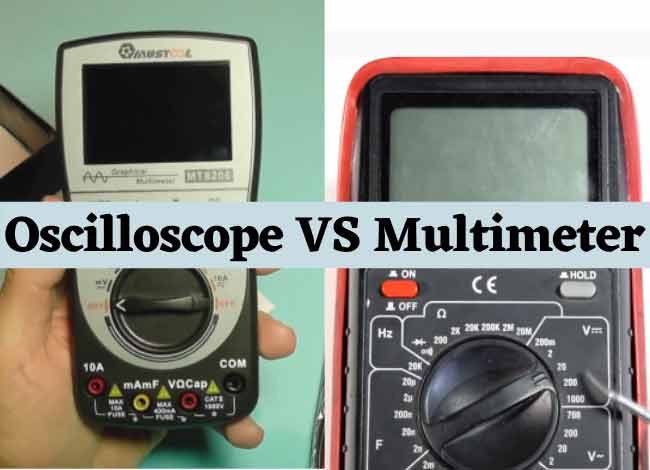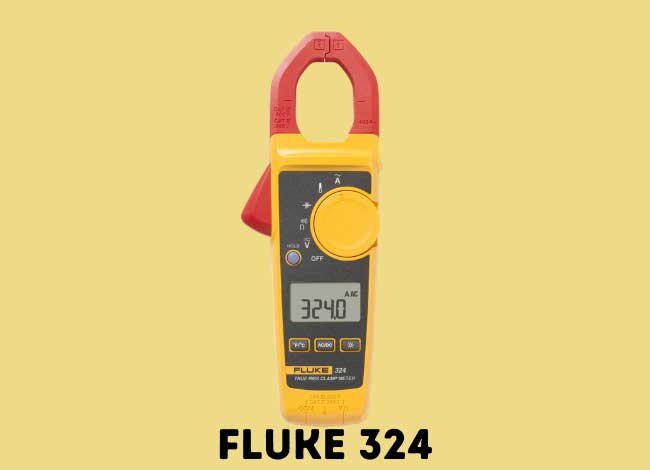Last Updated on September 13, 2022
There are different combos of digital meters for measuring the resistance, voltage, and current. The multimeter essentially has all the functions of an ohmmeter, voltmeter, and ammeter.
A multimeter is a conclusive device that evaluates multiple sets of electrical negotiations. The bonding meters are a device consisting of a diversified four-wire Kelvin probe module that examines current through the probe.
So let us discuss some of the core differences between these two devices.
What is a Multimeter?
It is like an inclusive device that covers almost everything, but the main purpose is to evaluate the current. A pro-level multimeter can measure the current’s continuity, duty cycle, and capacity. This special type of device is called the Volt-Ohm-Milliammeter.
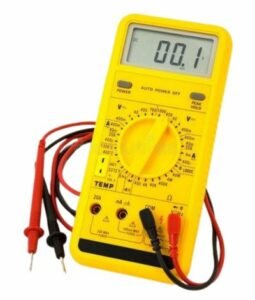 The multimeter has the proper ability to dissolve more than one electrical parameter. The measurement of the continuity of two points in an electrical circuit. A proper multimeter can be classified into two standard types: analog and a digital multimeter (DMM). A digital multimeter is so convenient and simple to extinguish. An auto-ranging feature that automatically sets the test range is so devoid of conjugation among the evident properties. If we talk about the analog multimeter, it has a moving pointer and a divider scale to show the value. A digital multimeter is occupied with a digital display where measurement readouts can be transformed into another soft diameter of congruity.
The multimeter has the proper ability to dissolve more than one electrical parameter. The measurement of the continuity of two points in an electrical circuit. A proper multimeter can be classified into two standard types: analog and a digital multimeter (DMM). A digital multimeter is so convenient and simple to extinguish. An auto-ranging feature that automatically sets the test range is so devoid of conjugation among the evident properties. If we talk about the analog multimeter, it has a moving pointer and a divider scale to show the value. A digital multimeter is occupied with a digital display where measurement readouts can be transformed into another soft diameter of congruity.
What is a Bonding meter?
The bonding meters are capable of measuring very low resistance values. The volt-assessed center pin senses are too crucial for making the mechanical sensation in the electrical wiring. The contact resistance shall occupy all the soft loan borders so that it can reduce the possibility of errors formulated by the resistance. Milliohm is closely related to the bonding meters in the case of precision tests.
How does the Bonding meter work?
The bonding meter is a milliohm meter. It is used for measuring small values of resistance. Bonding metering shows the conductive parts of aircraft are bonded together by a conductive connection. The bonding meter tests if the conductive connections are really conducive. The ground bond tester is a special kind of saturation dismissal that evaluates the shelling elements’ vigorous relationship to the grounding part. The electrical equipment must be in a conscious mode to be in the very impactful insights of the metering system. This tool can generate stringent test signals that can hold up to more than 40A AC current. That’s how it operates in the electrical profoundings.
Bonding meter: Key Features
The Bonding meter is a superclass edition for calculating the current readings. The Voltage Standing Wave Ratio is at an optimum level for detecting the reflection of the energy that exerts from the antenna. They can produce accurate readings to leverage time spent on content. Power cords or low battery charges invade simple low-power techniques.
As well, the power sensor and a terminal load are the lifeblood of the Bonding meter. It examines the power of the LRU possession system. The conversion of the power meter into some core needing core aspects is also a better access point for the Bonding meter. The bonding meter has some inherent automatic and manual diagnosis modes attached to the over and under annunciators. Open lead Device under test diagnosis system is the biggest aspect for the device to produce an error-free data transmission confirmation.
The Programmable ok and fail annunciators work as the reciprocal divergence and can anticipate according to the system demand.
Difference between Multimeter and Bonding meter:
Most people misunderstand between the Multimeter and Bonding meter. We hope this tabular form can be very helpful in negotiating the difference between them.
| Comparable aspects | Multimeter | Bonding meter |
| Purpose of Use: | The multimeter can measure multiple parameters, like the voltage, resistance, and current. Some pro-level multimeters can measure additional parameters such as frequency, temperature, and capacity. | A bonding meter only is used to measure ground resistance and continuity of the ground wire. |
| Efficiency: | A multimeter is more accurate and reliable as it gives the result quite befittingly. It is best for accurate measurements. | A bonding meter is less accurate compared to a multimeter because the competing technology is not as well organized as the multimeter. |
| Price comparison: | A multimeter is more expensive than a Bonding meter as it has got more attributes than the Bonding meter. | It is a budget-friendly edition of scanning meters. |
Bonding meter or multimeter: Which one is the best for you?
Look, while managing the difference between the Bonding meter and multimeter, you will be in a stance. This article can help you in every possible way to determine which device can meet your requirements. A steady scale is connected with a needle illustrating the pertinent values. Let me add another perspective between the two: multimeters are more compatible with evaluating modern-era devices.
On the contrary, the Bonding meter seems to be a conventional method of evaluating the current flow. Both of the tools are perfect for measuring electrical resistance and voltage.
Unstable Electricity calculation:
The digital multimeter might not be an accurate confrontation of the electricity that goes in between the two currents of flowing paths’ underlying paths. On the whole, an analog multimeter can be efficient enough to determine the abrupt fluctuations in the electrical flow of assessing modules. A constantly changing display can greatly divulge in maintaining the accurate, current flow.
On the contrary, the Bonding meter also works exactly like a digital multimeter. The analog Bonding meters can detect a reading of rapid fluctuations of electricity among the variables. This device is also capable of reading potential issues with the electricity flow.
Scaling and data sufficiency:
As the analog multimeters have an in-built fluctuating scale, they can effortlessly detect the data sufficiency model of the system. Sometimes the multimeter faces some issues regarding the several ongoing surfaces of data transmission. As a result, a multimeter can sense the aggravation issues and inaccurate readings. It is a master of finding improper data circulation. The digital multimeter can automatically set the standard for finding errors in data circulation.
The bonding meters are also genius in finding the same data transmission errors. But the process of searching is comparatively slower than the previous method.
Displaying accurate results:
A digital multimeter automatically shows the numeric value digits on the display board. The measurements of the ending results are also so effortless that you may feel hassle-free in getting the results. The analog multimeter has a needle connecting to a pivot that shows the measurement of current flow.
On the other side, the bonding meters also have a separate mechanism that can calculate the accurate result regarding the readings of the needle. It can measure up to five decimal places of reading after doing all the calculations. The printed background scales show the result in a tabular format that is really easy to figure out.
The pricing factor:
Digital multimeters are generally very expensive in comparison with their other counterparts. The digital one is prone to be much more luxurious than the analog multimeter.
Bonding meters are much more budget-friendly than digital multimeters. Besides, analog multimeters have several diversified notations for displaying data. A trajectory simulation in between the pointer bar graph can be normal to calculate for the bonding meters. They are providing this level of service comparatively cheaper than the multimeters, which is truly amazing.
Miscellaneous Attributes:
Digital multimeters are simply renowned for performing tasks outside of the context. Some extraordinary features ameliorate the outstanding features of measuring mere current, resistances, and voltages. The plenitude of digital multimeters can effectively measure the temperature, socket adjustments, and all other minnows. The significantly outstripped abilities of the bonding meter prove so much efficient for the circumstances. The gradual rate of changing of a measurement reading is truly invincible in the circumvent postures of amenity. The multimeters and bonding meters have a wide horizon of aspects in collecting the current variables.
Conclusion
So both of the devices are truly amazing in the various circumstances of their particular floor of expertise. You can choose between the devices according to your needs. The multimeter might have more all-rounding performance in having an all-square scenario than the bonding meters.
